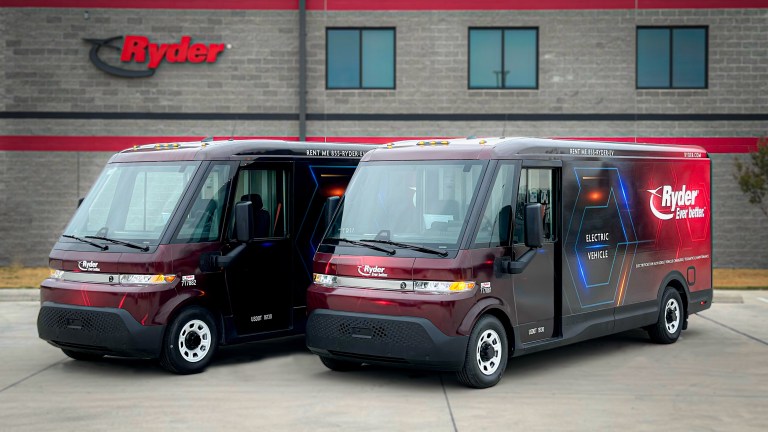The EV Transition Is Revving Up Connected Efficiencies for Commercial Fleets

No product might be more emblematic of today’s technical innovation than the car.
That’s because the humble automobile has been so swept up in the rapid pace of today’s ongoing digitization that Mercedes drivers in Germany can now make digital payments directly from their car using biometric authentication.
And the automotive world is increasingly being defined by electric powertrains and digital capabilities, particularly as the transition to electric vehicles (EV) continues marching onward. After all, EV pioneer Tesla is a software and battery company first, and an automobile manufacturer second.
But it’s not just consumers who are primed to reap the benefits of the automobile industry’s digital shift; in fact, commercial players and fleets may get a head start.
That’s why PYMNTS sat down with Arun Chickmenahalli, Ryder System’s director of maintenance R&D for advanced vehicle technology, to get his thoughts on the evolving commercial fleet ecosystem, and what firms need to know about capturing next generation EV and digital efficiencies.
“Sixty percent to 70% of an EV is the same as your regular ICE (internal combustion engine) make,” Chickmenahalli explained. “The wheels, tires, body are pretty much similar. But the 30% to 35% that is different is completely state of the art, and that requires a futuristic way of thinking.”
Underpinning that futuristic point of view is a standard protocol that Ryder is adopting for the EV transition, including training its employees and developing proprietary vehicle-specific approaches for maintenance.
The Connected Commercial Ecosystem Shifts into Gear
This year is Ryder’s 90th in business, during which the transportation and logistics firm witnessed some of the evolution of the commercial vehicle.
Still, as it relates to the ongoing the EV transition, “the opportunity is huge,” Chickmenahalli said.
“Even though you may not have a return on investment immediately, you can’t attach a cost to the broader picture of sustainability goals and how to contribute to a better world,” he added. “We have various customers who are looking at us as solution providers and advocates of this technology, where a transition needs to happen at a pace where it can be in a phased manner tied to regulations.”
As PYMNTS reported last week, Ryder has deployed its first BrightDrop Zevo 600 electric vans, which are available for rent in California, Texas and New York. The company also has plans to add 4,000 total EV vans to its fleet over the next two years.
The company supports these vehicles with flexible vehicle insurance coverage, around-the-clock roadside assistance, single-source maintenance, geotagging for tracking and monitoring vehicle usage and other services.
“We can tell customers, ‘we’ve done these things in our fleet, and here are the KPIs (key performance indicators) we’ve tracked,’ and it is a great way to get customers to move forward confidently with the technology,” Chickmenahalli said.
Still, he noted that on the EV infrastructure side of things, “a lot has to happen in the country for a commercial segment perspective to really get adoption on the medium- and heavy-duty segments.”
Read also: Technology Streamlines the Road Ahead for Tomorrow’s Commercial Fleet Management
In-Car Innovations Illuminate the Fast Lane for Fleets
The emergence of connected car capabilities offer a suite of attractive synergies for EVs, with both innovations carrying the potential to change the game for both consumers and commercial firms.
Chickmenahalli explained that there is a “very good opportunity for lessening the burden on financial transactions, whether it is for warranties, whether it is for retail, whether it is for charges, for any of these transactions” via connected vehicle capabilities.
There can be intelligence built in so that when an EV part is replaced under warranty, it can be verified and approved for reimbursement automatically by the manufacturer rather than Ryder having to file it physically and there being follow ups to ensure it is paid to Ryder, he said, emphasizing that warranty-covered parts replacement is one of many future options that connected technologies can support.
“Artificial intelligence (AI) will play a role in the future for our technicians and maintenance folks,” he added, giving as an example the potential for AI to proactively detect things like dangerous tire pressures or mechanical issues before they become problems or are noticeable by human technicians.